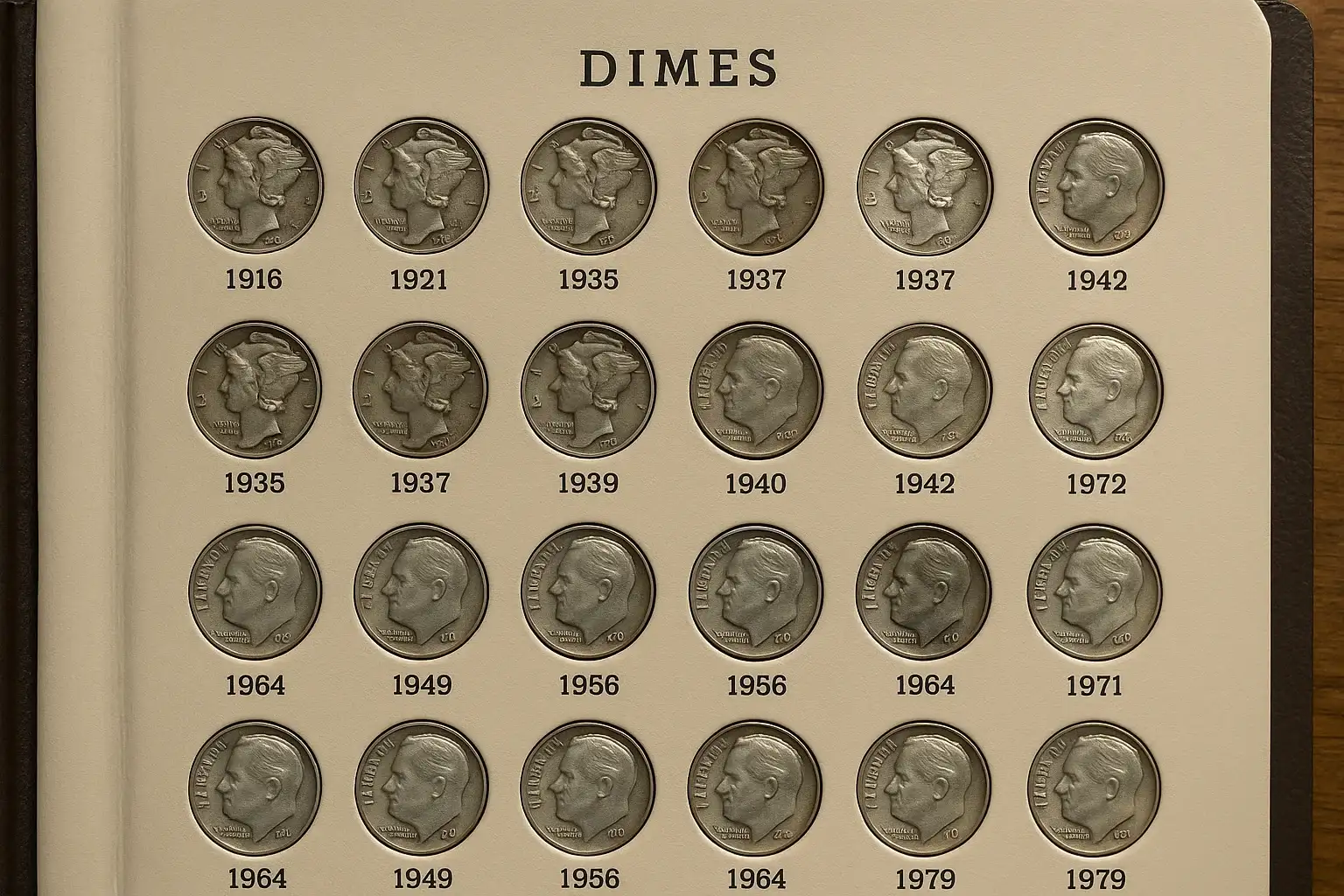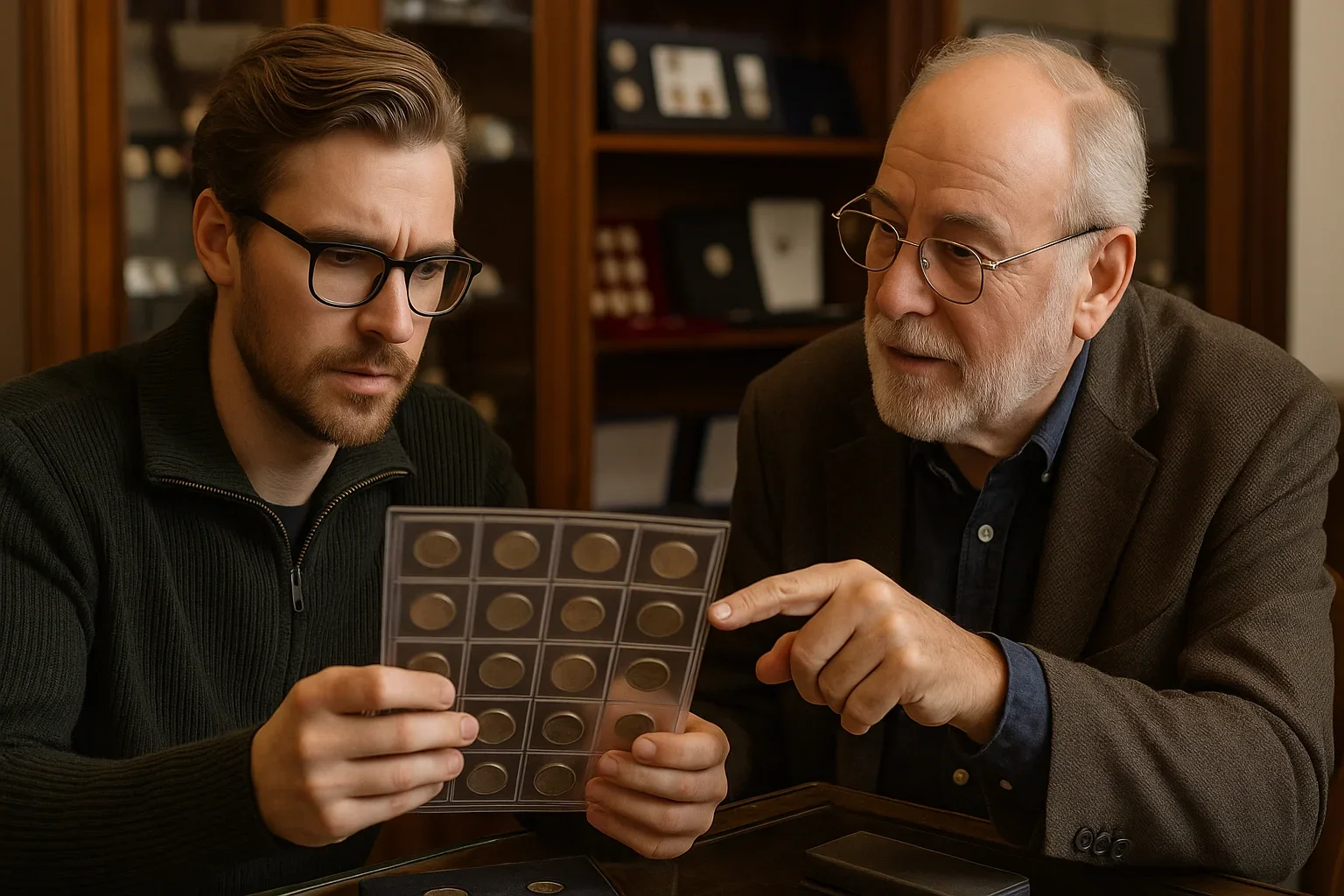The Evolution of the U.S. Dime and Its Rarest Issues
.In U.S. coinage, a dime is the ten-cent piece, equal to one-tenth of a dollar. It has been part of the nation’s currency since 1796 and is the smallest coin in diameter and thickness currently in circulation. Modern dimes are composed of a copper core clad with a cupronickel (75% copper, 25% nickel) outer layer, while older dimes minted before 1965 contain 90% silver and 10% copper.
The design has changed multiple times over its history, from the Draped Bust and Seated Liberty motifs in the 19th century to the Barber, Mercury, and current Roosevelt designs. The Roosevelt dime, introduced in 1946, honors President Franklin D. Roosevelt and has remained in production ever since.
Who's on the Dime?
The U.S. dime currently features President Franklin D. Roosevelt on its obverse (front). His portrait has appeared on the coin since 1946, the year after his death, chosen to honor his leadership during the Great Depression and World War II, as well as his association with the March of Dimes campaign to fight polio.
Before Roosevelt, earlier dime designs featured figures such as the Winged Liberty Head (commonly called the Mercury dime), the Barber Liberty Head, and various depictions of Liberty in the 19th century.

All Dimes
Draped Bust Dime (1796–1807)
The first U.S. dime featured Liberty facing right with flowing hair tied with a ribbon, draped in classical style. The reverse showed a small eagle (1796–1797) or a heraldic eagle (1798–1807). Struck in 89.24% silver.
Capped Bust Dime (1809–1837)
Liberty wore a cap inscribed “LIBERTY,” with curls of hair visible beneath. The reverse featured an eagle with a shield. Early issues were larger, but the design was modified in 1828 to a smaller diameter.
Seated Liberty Dime (1837–1891)
Liberty sat on a rock holding a shield and a pole topped with a liberty cap. The reverse read “ONE DIME” inside a wreath. Over the years, several subtypes appeared, adding stars, arrows at the date, or changes to the wreath.
Barber Dime (1892–1916)
Designed by Charles E. Barber, Liberty wore a Phrygian cap and laurel wreath. The reverse kept the “ONE DIME” inscription within a wreath. Struck in 90% silver.
Winged Liberty Head (“Mercury”) Dime (1916–1945)
Adolph A. Weinman’s design portrayed Liberty with a winged cap symbolizing freedom of thought. The reverse showed a fasces (bundle of rods) and olive branch for strength and peace. Popularly misidentified as the Roman god Mercury.
Roosevelt Dime (1946–present)
John R. Sinnock’s design honors Franklin D. Roosevelt. The obverse has his portrait facing left, while the reverse shows a torch flanked by olive and oak branches. Silver composition (90%) was used from 1946–1964; from 1965 onward, dimes have been copper-nickel clad.
U.S. Dime Values by Type
(Common dates only — key dates can be worth far more)
Type | Years Issued | Metal | Circulated Value (G–VF) | Uncirculated MS-63 | High Grade MS-65 |
Draped Bust | 1796–1807 | 89.24% silver | $500 – $1,500+ | $3,000+ | $5,000+ |
Capped Bust | 1809–1837 | 89.24% silver | $50 – $300 | $800+ | $1,500+ |
Seated Liberty | 1837–1891 | 90% silver | $15 – $50 | $150+ | $300+ |
Barber | 1892–1916 | 90% silver | $4 – $15 | $60+ | $150+ |
Winged Liberty “Mercury” | 1916–1945 | 90% silver | $2 – $5 | $20+ | $40+ |
Roosevelt (Silver) | 1946–1964 | 90% silver | $2 – $4 (bullion-driven) | $8+ | $15+ |
Roosevelt (Clad) | 1965–present | Copper-nickel clad | Face value | $2+ | $10+ |
What Are Rare Dates?
In U.S. dimes, “rare dates” are years and mint mark combinations with unusually low mintages, high demand from collectors, or survival in very few well-preserved examples. These coins are far scarcer than typical dates in their series and can be worth hundreds or even millions depending on grade.
For example, in Barber dimes, the 1894-S is one of the rarest U.S. coins ever made, with only 24 minted and nine known today. In Mercury dimes, the 1916-D is the key rarity, with just 264,000 struck. For the Roosevelt dime series, while most dates are common, certain varieties like the 1982 no-P dime (missing mint mark) are valuable because of minting errors rather than low mintage.
In each dime type, rare dates often become the “keys” to completing a collection, and their prices rise steeply in higher grades because demand far exceeds supply.
Draped Bust Dimes (1796–1807)
1796 and 1797: First-year issues with extremely low surviving populations.
1798 Small 8 and Large 8 varieties: Both scarce in higher grades.
1804 and 1805: Lower mintages and tougher to find problem-free.
Capped Bust Dimes (1809–1837)
1809: First year of the type; scarce in any grade.
1822: Low mintage; rare in all grades.
1829 Curl Base 2 variety: Recognized as a significant rarity.
Seated Liberty Dimes (1837–1891)
1846: Extremely low mintage (~31,300), rare in all grades.
1856-S: First San Francisco dime; scarce and popular.
1871-CC, 1873-CC (with arrows), 1874-CC: Carson City issues with low mintages and high demand.
1871 and 1872: Low-mintage Philadelphia coins.
Barber Dimes (1892–1916)
1894-S: Only 24 minted; nine confirmed survivors — one of the rarest U.S. coins.
1895-O: Low mintage, tough in high grades.
1896-O, 1901-S, 1903-S: All low mintage and heavily circulated, making Mint State coins rare.
Winged Liberty “Mercury” Dimes (1916–1945)
1916-D: Key date with only 264,000 minted; heavily collected.
1921 and 1921-D: Both have low mintages and are tough in high grades.
1942/1 and 1942/1-D overdates: Major varieties prized by specialists.
Roosevelt Dimes (1946–present)
1949-S: Lowest-mintage silver Roosevelt dime.
1955: Scarce in high grades.
1982 “No P” (Philadelphia): Missing mint mark due to a die error; rare in circulation.
1996-W: Special West Point issue only in mint sets.
How to Buy and Sell

1. Buying Rare Dimes
Learn the Series: Before spending serious money, study the coin type, key dates, and varieties. This helps you spot overgraded coins or counterfeits.
Insist on Certification: For valuable dimes (especially 1916-D Mercury or 1894-S Barber), buy only coins graded and authenticated by top services like PCGS or NGC.
Check Price Guides & Auction Records: Compare dealer prices to recent sales on Heritage Auctions, Stack’s Bowers, and PCGS CoinFacts to avoid overpaying.
Buy from Reputable Sources: Use established coin dealers, major auction houses, or well-reviewed online marketplaces. Avoid raw (ungraded) “key date” coins from unknown sellers.
Inspect for Eye Appeal: Within the same grade, coins with better luster, fewer marks, and attractive toning often bring higher resale prices.
2. Selling Rare Dimes
Know Your Coin’s Grade and Value: If uncertified, consider getting it graded before selling — certified coins bring more buyer trust and higher prices.
Choose the Right Venue:
Auction houses for high-value pieces — they attract serious bidders.
Reputable coin dealers for quicker sales, though often at wholesale prices.
Coin shows to get multiple dealer offers.
Online platforms (eBay, GreatCollections) for a wider audience, but ensure you have good photos and a strong reputation.
Time the Market: Selling when silver prices are high can help with bullion-based coins, while numismatic rarities often sell best during large coin show seasons or after major auction publicity.
Be Transparent: Provide detailed, honest descriptions and clear photos to build trust and avoid disputes.
Conclusion
Rare dimes represent an important segment of the United States numismatic market, with examples such as the 1894-S Barber, 1916-D Mercury, and 1982 “No P” Roosevelt ranking alongside other elite rarities including the 1943 copper cent, 1909-S VDB Lincoln cent, and 1889-CC Morgan dollar in terms of desirability and market performance.
Their value is based on a combination of low mintages, historical significance, and superior preservation, factors that consistently sustain demand among advanced collectors and investors.
In a market where authentication and accurate attribution are essential, the use of advanced tools such as the Coin ID Scanner app allows precise identification and current market value estimation.

